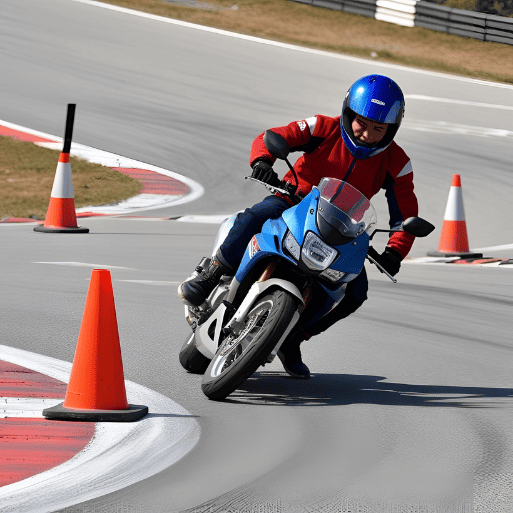Common Mistakes to Avoid in Your Driving Test

Common Mistakes to Avoid in Your Driving Test in Nepal
Category: Driving Tips
Passing the practical driving test—or “trial” as it’s often called in Nepal—is a major milestone on the road to earning your driving license. However, many well-prepared learners still fail due to avoidable mistakes. While knowing how to drive is essential, understanding what not to do during your trial is just as important.
Whether you’re getting behind the wheel for the first time or brushing up for your test, here are 10 of the most common mistakes candidates make during their driving test in Nepal—and how to avoid them.
1. Poor Observation
One of the key aspects of safe driving is constant and accurate observation. Many candidates fail to check rear-view and side mirrors regularly, especially before making critical moves such as lane changes, turning, or slowing down.
What to Do Instead:
- Check your mirrors every 5–8 seconds while driving.
- Always glance at your blind spots before turning or merging.
- Use your head movement to indicate mirror checks during the test—examiners look for that.
Tip: Practice building mirror-checking into your driving habit until it becomes second nature.
2. Incorrect Use of Indicators (Signals)
Failing to signal, signaling too late, or forgetting to cancel a turn signal are some of the most common (and easily avoidable) mistakes.
Why It Matters:
Signals communicate your intentions to other drivers. Poor signaling can confuse or even endanger others on the road.
What to Do Instead:
- Signal early and clearly—at least 3 seconds before making a move.
- Always cancel your indicator after completing the turn.
Tip: Remember: No signal = No communication = No license.
3. Improper Speed Control
Driving either too fast or too slow can lead to a failed test. Excessive speed suggests recklessness, while overly slow driving can disrupt traffic flow.
What to Do Instead:
- Follow posted speed limits.
- Adjust your speed based on road, traffic, and weather conditions.
Tip: Smooth acceleration and deceleration are signs of a skilled, attentive driver.
4. Steering Control Issues
Jerky turns, over-steering, or under-steering are signs of poor vehicle handling. This becomes especially noticeable during turns or while maneuvering through the trial course.
What to Do Instead:
- Keep both hands on the wheel in the correct position (usually 9 and 3 or 10 and 2).
- Make fluid and precise steering movements.
- Practice maneuvers like sharp turns and figure “8” loops repeatedly until they feel natural.
Tip: If your steering feels off, practice in an open area before your test.
5. Difficulty with Trial Maneuvers
Many applicants struggle with specific components of Nepal’s driving trial, such as:
- Figure “8”
- Incline start (Ukalo)
- Parallel or perpendicular parking
- U-turns in narrow areas
What to Do Instead:
- Practice each maneuver dozens of times under real conditions.
- Learn the correct techniques for clutch, brake, and accelerator coordination.
Tip: These sections are usually where most people fail. Treat each as a separate skill and master them before your test.
6. Ignoring Traffic Signs and Road Markings
Disregarding basic signs like *STOP, *YIELD, or speed limits, or crossing solid lane lines, shows a lack of awareness and discipline.
What to Do Instead:
- Learn and memorize common road signs used in Nepal.
- Follow all lane markings and arrows strictly during the trial.
Tip: Even one missed STOP sign can cost you your license—stay sharp and observant.
7. Hesitation or Lack of Confidence
Being overly cautious might seem safe, but examiners see it as indecision or lack of control. For instance, pausing too long at intersections, or taking too much time to enter a main road, disrupts traffic and shows uncertainty.
What to Do Instead:
- Stay calm, focused, and confident.
- Make decisions promptly and clearly, especially when merging or turning.
Tip: Confidence doesn’t mean speeding—it means showing that you're in control.
8. Poor Clutch and Gear Control (for Manual Vehicles)
Stalling the vehicle, especially on inclines, or rough gear shifting are classic mistakes. Poor clutch control is a leading cause of failed trials in Nepal, where manual transmission vehicles are common.
What to Do Instead:
- Practice smooth gear changes.
- Learn the biting point of the clutch to avoid stalling.
- On inclines, use the handbrake technique to start smoothly.
Tip: Practicing on real roads with similar inclines will prepare you better than just using a flat parking lot.
9. Improper Road Positioning
Many learners drive too close to the edge of the road, veer into oncoming lanes, or position themselves poorly when preparing to turn.
What to Do Instead:
- Stay centered in your lane.
- Line up correctly for right or left turns.
- Avoid hugging the curb or drifting across lanes.
Tip: Examiners watch closely how well you follow lane discipline—especially during turns and u-turns.
10. Panicking Under Pressure
Even the best learners can fail due to nerves. A small mistake can snowball if you panic or lose focus.
What to Do Instead:
- Stay calm and breathe deeply.
- Focus on the present moment, not on mistakes you may have just made.
- If you make a minor error, recover gracefully—this often impresses the examiner more than perfect execution.
Tip: A calm mind leads to confident driving.
Final Thoughts
The driving test isn’t designed to trick you—it’s designed to assess your ability to drive safely, responsibly, and confidently. If you prepare thoroughly, understand the road rules, and avoid these common mistakes, you’ll have a much better chance of passing your driving test in Nepal.
- ✅ Practice regularly
- ✅ Know your maneuvers
- ✅ Stay focused and calm
Best of luck with your trial—drive safe and smart!